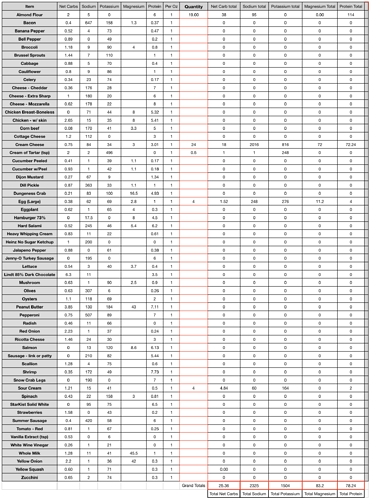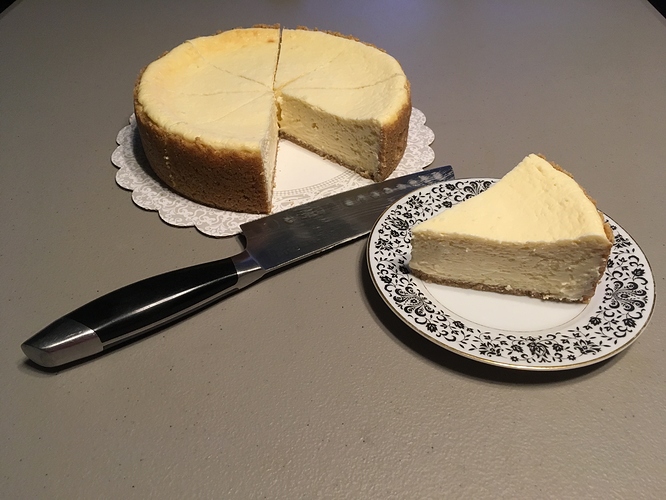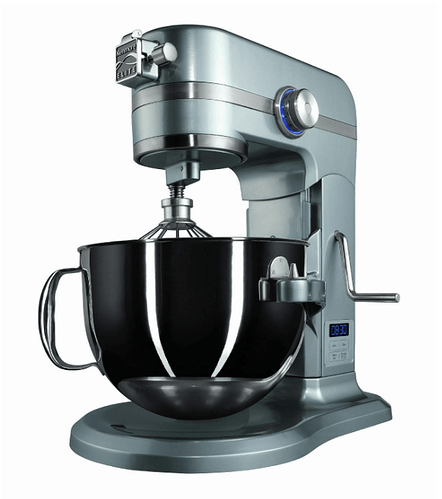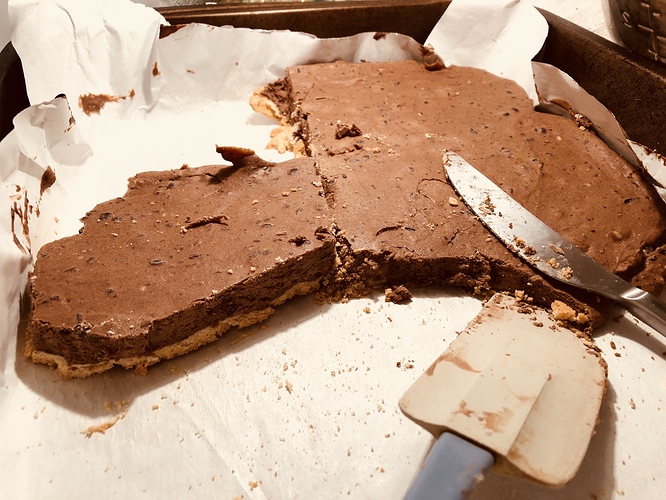I’m sure it will come out fine. it’s a fairly simple recipe, and the main thing is to know your oven. - I set mine at 300 degrees, using the convection setting. The fan distributes the air more evenly, but other ovens I’ve had used a different time. You have to find out what works for each. … The one thing you want to watch for, is light cracking to start to form around the perimeter of the cake. Once you see this, it’s pretty much done, and the center should appear to be sunken in some, due to the edge raising. (Again, I think the butter in the crust should be lower then 4 tbs. since it’s a bit wetter than needs be. You should be able to form it, light a lightly wet sand. But if bumped, it will collapse. This is when it’s at it’s best. … If it helps, I will post my process. It’s quite simplistic really.
First, I make the crust and form it into the springform pan. I microwave the butter and add to the dry mix, then stir until it all looks dampened, but pliable. Then form it into the pan. - Once done, I place it in the fridge until I finish the cake batter. (I used to bake it for 10 minutes or so, when I first started making cheesecakes, but found it’s not really needed. Plus the butter in the crust mix tightens up when cold, so this helps keep form.)
Next I take out the cream cheese and set a timer for 30 minutes. (Allows it to soften some) Around 25 minutes later, I pre-heat the oven and start getting the ingredients together. Crack the eggs into a glass, get the sour cream ready, as well as the sweetener. Then place all the cream cheese into the mixing bowl. (Basically I’m ready to start mixing about when the 30 minute timer goes off.
I mix the cream cheese first on high, allowing it break down some, for a minute or so. Then slow down the speed to add the vanilla & sour cream and sweetener. (This is when you can mix it well within adding too much air. But don’t over-mix, which will cause cracking) Once that’s blended, switch to a lower setting and add the eggs one at a time, allowing the egg to blend in before adding the next. Blend only until combined, because over blending will cause cracking.
Pour batter into springform pan and bake at 300 degrees for 45-55 minutes. Depends on the oven. (Cheesecakes don’t like it when you keep opening the door, so do so sparingly. (Mine has a glass front which helps) Once slight cracking forms around the edges, you should be good. … I set mine on a wire rack and allow it to cool for 30-40 minutes, before refrigerating. - Once refrigerated, allow it to set up for at least 8 hours, or up to three days before serving. (I like giving it three days since it tightens up nice and gets very creamy. Even at 8 hours I find the center tightened, but still not as creamy as the outer edges.)
Additionally, it really helps a LOT to have a stand mixer when making cheesecakes! Cream cheese can be hard on a mixer, and I have worn out quite a few. I actually have (two) 6-Quart Kenmore Elite Mixers presently, since they are heavy duty and handle the cheesecakes mix well.
Using a hand mixer for cheesecakes… though it’s doable, it’s not an easy task and can be a chore! Mainly due to the heavy mix of cream cheese. - I’ve had to do this myself, when my mixer broke and I had some orders. Hence, having two mixer noted above. … If I had to use a hand mixer now, I would definitely let the cream cheese soften up even more, to take some of the toll of the mixer.
Though the above may seems like a lot, it’s really not that hard. Let us know how it comes out. … I may be trying mine tonight? But still not sure. It will be tomorrow at the latest, which will put it at three days as well. 
Oh, one last thing… Though I don’t use a water-bath as some do (says it helps prevent cracking) I highly recommend placing a cookie sheet under the cheesecake, since butter will sometimes drip out and burn in the bottom of the oven. I have around 12 springform pans, and it happens every once in a while, no matter which one I use. (I’ve also not had a cheesecake crack on me in about 12 years.)
 I’ve been making cheesecakes for nearly 20 years, I would guess. (Get a lot of orders from folks at work, but also have a store near me that’s been ordering them for around 5 years now? … But I can say this was my first attempt at a 'Keto Friendly" Cheesecake.
I’ve been making cheesecakes for nearly 20 years, I would guess. (Get a lot of orders from folks at work, but also have a store near me that’s been ordering them for around 5 years now? … But I can say this was my first attempt at a 'Keto Friendly" Cheesecake.



